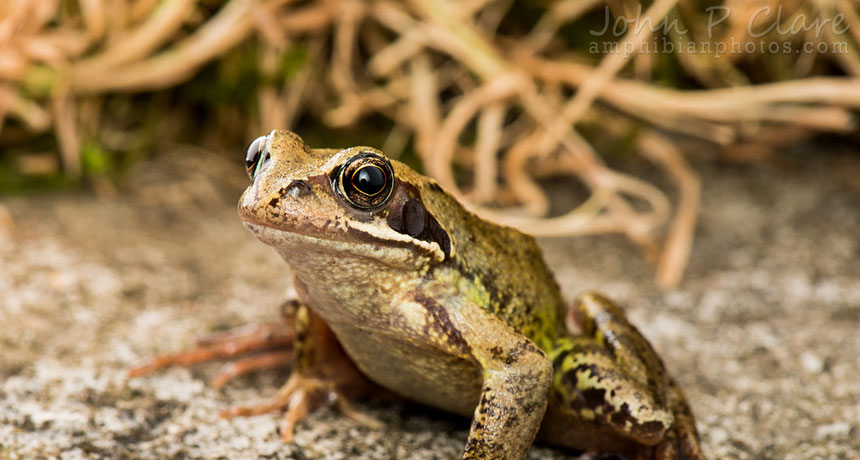Explainer: Male-female flexibility in animals
Some animals behave as if they were the opposite sex; others can even change their sex — and still produce offspring

Europe’s “common frog” (shown here in Ireland) is a widespread species. But different “races” of it vary in their potentially sex-reversing lifestyles.
John Clare / Flickr (CC BY-NC-ND 2.0)
People tend to describe materials that can bend and be easily transformed as plastic. Most such materials are made from polymers. But even behaviors can bend and morph. In that sense, these too can be considered plastic.
Paul Vasey works at the University of Lethbridge in Alberta, Canada. As a comparative psychologist, he studies behaviors in animals. And he’s noticed that how animals behave in terms of their biological sex often is not rigid or unchanging. Some behaviors can appear rather plastic.
To compare behaviors across species, it is important to keep in mind some important differences, Vasey notes. For instance: In humans, “you have to have a concept of self.” In people, he says, identity and gender can be nearly impossible to untangle. But outside of perhaps the great apes, he says, there’s very little evidence of a concept of “self” in animals.
This means animals don’t have a sense that they are acting male or female. They merely express behaviors that are typical — and sometimes not typical — of the sex to which they belong. Despite that, there are many examples of intersex conditions within the animal kingdom. Here, signs of both sexes can show up. And they can show up both in behaviors and in physical traits.
For instance, the 1999 book Biological Exuberance points out that more than 50 species of coral-reef fish possess the ability to reverse their sex organs (egg-making ovaries and sperm-making testes). This is called trans-sexuality. It can affect wrasses, groupers, parrotfish, angelfish and more. Fish that begin life as females, with fully functioning ovaries, can undergo a dramatic change. Voilà, they now have a fully functioning male reproductive anatomy. Even after their sex-change, both males and females can reproduce.
Several types of birds, such as warblers and ostriches, also can exhibit a mosaic of male and female characteristics. The color patterns, plumage, singing and other traits of one sex may show up in some members of the opposite sex.
Researchers have documented intersex conditions in grizzly, black and polar bears. In certain populations, a small percentage of female bears possess genitalia that resemble those of male bears. Some of these sows give birth to cubs, despite looking like a boar (a male bear). Intersexuality also has shown up in baboons, deer, moose, buffalo and kangaroos. No one is sure why. But in at least some instances, water pollutants — such as pesticides — have led to clearly abnormal conditions. For instance, biologists have found eggs in the testes of some male alligators and fish that had been exposed to certain pesticides.
In some experiments, pesticide exposures even turned genetically male frogs into what appeared to be females. These Mr. Moms could bear healthy offspring — although they were always male (as each of their parents had been). In other instances, intersex conditions have arisen in completely natural settings.
But perhaps one of the best examples of sex plasticity comes from a new study in European frogs. A single species — Rana temporaria — lives in woodlands from Spain to Norway. Roughly equal numbers of males and females develop from tadpoles in the northern “race” of these frogs. But in the southern region, another race of the species produces females only. They have ovaries, the organ that makes eggs. Yet all of the frogs don’t stay female. About half will eventually lose their ovaries and develop testes. Now males, they can mate and reproduce.
The ovaries-first race relies on environmental cues to trigger the female-to-male change. Researchers reported these differences in the frogs May 7 in Proceedings of the Royal Society B.







